
ESPAÑOL
Promotor: Autoridades Locales de Atenas, Grecia
Arquitecto: B. Mikaelian, Paris, Francia
Ingeniero Estructural:
VINCI, Paris, Francia
INGEROP, Paris, Francia
DOMI, Atenas, Grecia
Buckland and Taylor, Vancouver, Canada
DENCO, Atenas, Grecia
Tipo: Puente atirantado
Longitud: 2252 metros
Ancho: 27.20 metros
Conocido también como "The Rion – Antirion Bridge", ya que une las dos ciudades con la misma designación, el Puente Harilaos Trikoupis lleva este nombre en honor al Primer Ministro quien dirigió a Grecia durante nada menos que cuatro décadas. El puente hace la función de conectar la zona norte del Peloponeso con el resto del país. Harilaos Trikoupis (1832-1896), en mi opinión fue el verdadero artífice y quien tuvo la visión desde un principio para la construcción de este necesario puente para unir las dos regiones de Grecia, aunque, no obstante, durante su mandato no contó con los medios adecuados para poder llevarlo a cabo. Casi un siglo después de su muerte y madurando la idea por parte de las Autoridades Locales de Grecia, a finales de la década de los años 1990 se realizaba el encargo a un importante equipo de arquitectos e ingenieros de diferentes partes del mundo para el diseño de un nuevo puente que salvase la enorme distancia de más de dos kilómetros de longitud, uniendo así ambas penínsulas. Con la construcción del nuevo puente se iba a ganar mucho tiempo y dinero por parte de los miles de usuarios que lo atravesarían diariamente, ya que hasta ese momento sólo habían podido cruzar el estrecho mediante Ferry. El equipo de arquitectos e ingenieros idearon un puente atirantado realmente innovador mediante cuatro enormes pilones de hormigón armado y que a modo de árboles, se situaron en el centro de los dos acercamientos a ambas orillas, uno a 392 metros de distancia, y el otro a 239 metros de distancia, respectivamente.

El enorme reto de este interesante proyecto consistía también en que el nuevo puente se iba a asentar sobre un terreno algo débil bajo las aguas del mar a nada menos que 65 metros de profundidad y con una actividad sísmica considerable; este último dato motivó que ambos extremos del puente se asentaran sobre una cimentación mediante placas tectónicas para contrarrestar los posibles movimientos en caso de un posible terremoto. El proceso constructivo del puente no fue nada sencillo. Después de construir los cuatro islotes circulares de 90 metros de diámetro cada uno, se erigieron los enormes pilones de hormigón armado y a continuación se fueron construyendo las diferentes secciones que componen el tablero. Los tirantes hacen que el tablero vaya creciendo hacia ambos lados de cada pilón uniendo así los diferentes tramos de la cubierta. La estructura superior de hormigón armado de cada pilón está formada por cuatro pilares inclinados con sección rectangular y que formando una pirámide, hacen también la labor de recibir a los tirantes de acero. Esta estructura superior se ancla a otra enorme base de hormigón armado que tiene la forma de una sección de pirámide invertida y base cuadrangular; estas bases inferiores se sitúan a diferentes alturas con respecto al nivel del mar.

El conjunto de cada pilón, que trabaja a compresión, soporta todo el peso del tablero mediante 8 juegos de 23 pares de cables atirantados. Estos tirantes de acero se anclan a diferentes perfiles metálicos que se conectan a su vez con la estructura metálica longitudinal que forma parte del tablero. Los cables atirantados, que trabajan a tracción y que arrancan desde la estructura superior de hormigón armado de forma piramidal, contienen en su interior cables más pequeños de acero galvanizado, entre 43 y 73, y quedan unidos por el recubrimiento de una funda cilíndrica tipo HDPE. El ancho del puente, de 27.20 metros, ofrece un servicio de dos carriles para cada sentido de tráfico rodado y otras dos pasarelas para peatones y bicicletas en los extremos. La estructura del tablero está compuesta por unas enormes vigas longitudinales de acero de 2.20 metros de altura, que quedan unidas por otras vigas metálicas transversales situadas cada cuatro metros. Después de hormigonar la solera se realizó sobre esta un asfaltado de entre 25 cm. y 35 cm. de espesor. El puente se diseñó también expresamente para dejar paso a los barcos de gran envergadura bajo su paso inferior. El Harilaos Trikoupis Bridge, por su diseño e innovación, y como todo un reto debido a las dificultades añadidas con las que contó desde un principio, se ha convertido, sin lugar a dudas, en uno de los puentes atirantados más largos e importantes de Europa y también del mundo.
Datos de interés:
Hormigón (m3): 210 000
Acero de refuerzo (t): 57 000
Acero estructural (t): 28 000
Peso de los cables (t): 3800
Costo total (EUR millones): 750
Fecha de servicio: 2004 de agosto

ENGLISH
Promoter: Local Authorities in Athens, Greece
Architect: B. Mikaelian, Paris, France
Structural Engineer:
VINCI, Paris, France
INGEROP, Paris, France
DOMI, Athens, Greece
Buckland and Taylor, Vancouver, Canada
DENCO, Athens, Greece
Type: Cable-stayed bridge
Length: 2252 meters
Width: 27.20 meterS
Also known as "The Rion - Antirion Bridge", and linking the two cities with the same designation, Harilaos Trikoupis Bridge is named in honor of the Prime Minister who went to Greece for no less than four decades. The bridge serves as a connecting the north of the Peloponnese with the rest of the country. Harilaos Trikoupis (1832-1896), in my opinion was the true architect and who had the vision from the beginning to build this necessary bridge linking the two regions of Greece, although, however, during his tenure did not have the appropriate means to carry it out. Almost a century after his death and are thinking on the part of Local Authorities of Greece, to the late 1990s the commission was made a senior team of architects and engineers from around the world to design a new bridge to bridge the enormous distance of more than two miles long, thus linking the two peninsulas. With the construction of the new bridge was going to make a lot of time and money by thousands of users who pass through daily, and that until then had only been able to cross the strait by ferry. The team of architects and engineers devised a truly innovative cable-stayed bridge with four huge concrete pylons and trees that way, were at the center of the two approaches on both sides, one to 392 feet away, and the other 239 meters away, respectively.

The enormous challenge of this project was also interesting that the new bridge was going to settle on a rather weak field under the sea no less than 65 meters depth and a considerable seismic activity, the latter data prompted both ends Bridge to settle on a foundation by tectonic plates to counteract any movements in the event of a possible earthquake. The construction process of the bridge was not simple. After building the four circular islands 90 meters in diameter each, were erected huge concrete pylons were built and then the different sections that make up the board. The straps make the board grows towards both sides of each loaf uniting the different sections of the roof. The concrete superstructure of each pylon is composed of four pillars inclined rectangular section and forming a pyramid, they also welcome the work of steel braces. This upper structure is anchored to another huge concrete base which is shaped like an inverted pyramid section and square base, these bases are located below at different heights with respect to sea level.

The combination of each pylon, which is under compression, supports the entire weight of the board with 8 sets of 23 pairs of stay cables. These steel straps are anchored to different hardware profiles that in turn are connected with longitudinal metal structure that is part of the board. The stay cables, which work to drive and started from the upper structure of pyramid-shaped concrete, contain within them smaller cables galvanized steel, between 43 and 73, and are joined by a cylindrical sleeve coated HDPE type . The width of the bridge of 27.20 meters, offers a two lanes for each direction of traffic and two pedestrian walkways and bicycle at the ends. The structure of the board consists of enormous steel stringers of 2.20 meters, which are joined by other cross girders placed every four feet. After concreting the slab was carried out on this one asphalting of 25 cm. and 35 cm. thick. The bridge was also designed specifically to make way for large vessels under his bottom. Harilaos Trikoupis The Bridge, by design and innovation, and as a challenge due to the additional difficulties with which they had from the start has, undoubtedly, one of the longest cable-stayed bridges and major European and the world.
Useful information:
Concrete (m3): 210 000
Reinforcing steel (t): 57 000
Structural Steel (tonnes): 28,000
Weight of cables (t): 3800
Total cost (EUR million): 750
Service Date: August 2004

"Images Harilaos Trikoupis Bridge, Athens, Greece"
Image 1 Copyright © GEFYRA, Website
Image 2 Copyright © GEFYRA - Nikos Daniilidis, License
Image 3 Copyright © Ranong Payakapan, Flickr
Image 4-5 Copyright © Ava Babili, Flickr
Image 6-7 Copyright © Styliadis Kostas, Flickr
"Text" Copyright © José Miguel Hernández Hernández
Editor, Escritor y Fotógrafo de Arquitectura /
Publisher, Writer and Architectural Photographer
Todos los derechos reservados / All rights reserved
www.jmhdezhdez.com
Related articles / Artículos relacionados
Megyeri Bridge
Budapest, Hungary
Mátyás Hunyadi
Viaduct Millau
Aveyron, France
Foster + Partners and
Michel Virlogeux
MUY IMPORTANTE!!! VERY IMPORTANT!!!
Deja tu comentario sobre este reportaje al pie de este post donde dice "Publicar un comentario en la entrada"; me será de gran valor para seguir mejorando este sitio web y te contestaré con la mayor brevedad posible... Muchas gracias!
No obstante, si te ha resultado interesante este reportaje y también el Blog en general, por favor, no dudes en hacerte Fan de la página de Fans del Blog de José Miguel Hernández Hernández en Facebook aquí
Nota importante: Una vez que hayas entrado en la página de Fans del Blog en Facebook, con sólo hacer click en el botón de "Me gusta", a partir de ese momento estarás al tanto de todos los nuevos reportajes interesantes relacionados con la Arquitectura y la Ingeniería que aquí se vayan publicando para no perder ningún detalle...
También puedes suscribirte por e-mail (te llegaría un e-mail con el enlace de cada artículo en el mismo momento en que sea publicado), o bien también puedes seguir el Blog a través de Twitter aquí
Nos vemos en el Blog!
Leave a comment on this story at the bottom of this post where it says "Post a comment in the entry", I will prove invaluable to further improve this website and I will answer as soon as possible .. . Thank you very much!
However, if you this story was interesting and the blog in general, please do not hesitate to make Fan Fans of the Blog page José Miguel Hernández Hernández on Facebook here
Very important: Once you enter the page Blog fan of Facebook, simply click on the button Like "From that moment you are aware of all new interesting stories related to the Architecture and Engineering are published here to avoid losing any detail ...
Can also subscribe by e-mail (I would e-mail with a link to each item in the same time it is published), or you can follow through Blog Twitter here
See you at the Blog!
HOME GEOGRAPHY ARCHITECTURE ENGINEERING SKYSCRAPERS
BRIDGES BUILDINGS TOWERS PUBLICATIONS ABOUT ME CONTACT
Copyright © José Miguel Hernández Hernández
Editor, Escritor y Fotógrafo de Arquitectura /
Publisher, Writer and Architectural Photographer
http://www.jmhdezhdez.com/
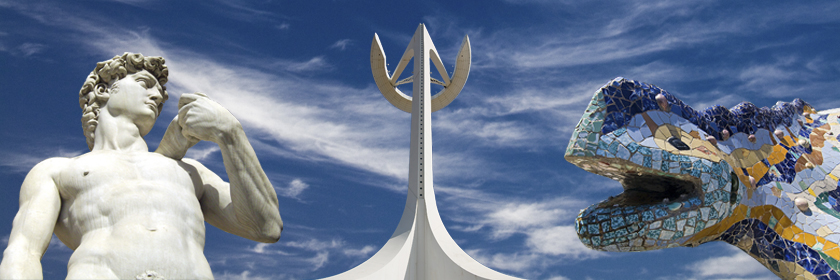





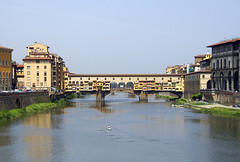




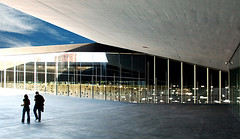



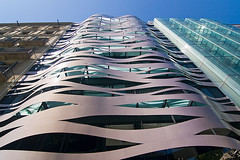



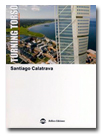

No hay comentarios:
Publicar un comentario